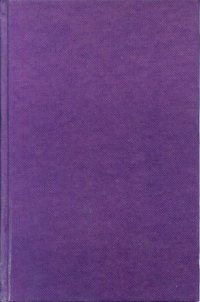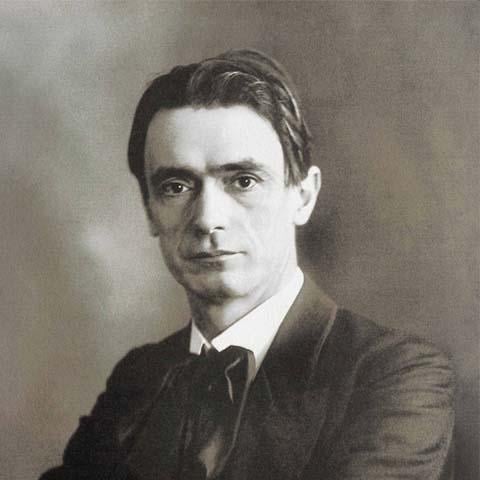The Foundations of
GA 93a

Table of Contents
- Title Page
- Colophon
- About the Transcripts of Lectures
- Introduction by the Editor
- Translator's Preface
- Lecture I 26th September 1905
- Significance of the symbol of the snake. Invertebrate and vertebrate animals — System of the solar plexus and the spinal chord. Inner study of man with the help of the Kundalini fire. Twelve stages of consciousness: seven appertaining to man, five to the creative gods. The Twelve apostles as the twelve Christ-permeated stages of consciousness.
- Lecture II 27th September 1905
- Activity, wisdom, will: three leading concepts in esotericism. Life after death. The appearance of the Guardian of the Threshold as the Double. The significance of Christ's death of atonement. The influence of Ulfilas on the German language. The chaos of the activity of the West and the tranquillity of the wisdom of the East.
- Lecture III 28th September 1905
- Stages of Consciousness in the three kingdoms of Nature and of Man. The plant world as sense organ of the Earth. The organ of orientation in the root of the plant and the corresponding organ of orientation in the human ear. The cross as the symbol of the evolution of direction in man, animal and plant. Plant consciousness on the Mental Plane; that of sensitive plants, idiots and animals on the Astral Plane, of minerals on the Higher Mental Plane. Human consciousness on the Physical Plane and its development to higher stages. The riddle of the Sphinx as indication of the future form of man.
- Lecture IV 29th September 1905
- Consciousness of the bees and ants. Alchemy and the Philosophers' Stone. Relationship of the kingdoms of Nature to each other. The being of man in the future.
- Lecture V 30th September 1905
- The conditions of bodies: solid, liquid, gaseous; the four kinds of ether: warmth, light, chemical and life ether and their life on the seven planes. Relationship between the passive and active organs: ear and speech i.e. larynx; heart and pituitary gland (hypophysis); eye and pineal gland (epiphysis). The development of the hypophysis into an active warmth-organ, the epiphysis to an active organ of vision. Tolstoi. Ulfilas.
- Lecture VI 1st October 1905
- The difference between receptive and creative beings in connection with the Blavatskian sequence of seven stages of being, to which man belongs: 1. receptive elemental beings; 2. man as a receptive and creative intermediate being; 3. the ‘pure man’ of the pre-Lemurian Age: Adam Cadmon and the development of the warm and cold-blooded animals; 4. Bodhisattvas: human beings who have become creative for the purpose of regulating the continuity of evolution; 5. Nirmanakayas: creative beings reaching out beyond the Earth who are able to bring new impulses into Earth evolution; 6. Pitris (Fathers): beings able to sacrifice themselves; 7. The actual gods. Heart and gall.
- Lecture VII 2nd October 1905
- Development of the beings on the Old Moon. Moon — Cosmos of Wisdom. Jehovah a rank of the hierarchies. Transition from the Old Moon to the Earth. Beginning of human incarnations: union of two different kinds of beings (spiritual & physical parts) resulting in birth and death; the degree of balance in the gradual reciprocal adaptation of the spiritual and physical parts. Past and future development of speech in connection with consciousness, life and form.
- Lecture VIII 3rd October 1905
- Reincarnation, development of civilisation and the zodiac. Christianity and the teaching of reincarnation. Water or the drinking of wine in relation to knowledge of reincarnation. The Trappist Orders. The Augustinian teaching of predestination.
- Lecture IX 4th October 1905
- The physical body as the oldest and most perfected part of the fourfold human organism. Self-awareness and sense-observation. The seven senses in relation to the seven planes and conditions of substance. The nature of the future Jupiter as the result of the thoughts, feelings and will impulses of present-day man. Materialism, a karmic result of earlier idealistic periods. The founding of towns and the Lohengrin saga. Causes of illnesses.
- Lecture X 5th October 1905
- The formation of the etheric body as the opposite of the physical body: the feminine etheric body of the man, and the male etheric body of the woman. The forms and colours of the astral body and its sheath: the auric egg. The development of the human auric egg through seven conditions of form of the earth. The membering of the human auric egg. The individualised astral light. Reading in the Akasha.
- Lecture XI 6th October 1905
- Man's participation in the physical, astral and mental world. The development of self-consciousness during the descent to the physical plane. The re-ascent to the higher planes through schooling towards selflessness in wishes and thoughts. The possibility of development towards freedom on the physical plane. Action and reaction as the technique of karma.
- Lecture XII 7th October 1905
- The origin of the physical body. The Kundalini fire as means of investigation into occult anatomy. The work of the Deva-forces on the bodily sheaths and the gradual loosening of the Deva-forces through the ego. The working of the Devas in the life after death. Sojourn in Devachan and re-embodiment. Life after death in the case of suicide and death by violence.
- Lecture XIII 8th October 1905
- Dionysius the Areopagite and his teaching about the Gods. The structure of the Church, an outer image of the inner hierarchical ordering of the world. Alteration in the forms of the flora, fauna and mineral kingdom through the work of man after death. The activity and nature of the Devas and the Planetary Spirits.
- Lecture XIV 9th October 1905
- Man's sojourn in Devachan between death and a new birth. The formation of devachanic organs on Earth through spiritual activity and soul relationships (Life in the Groups). The physical world as world of causes, Devachan as world of effects. Three stages of pupil-ship. The eighth sphere. The twelve Nidanas or forces of Karma.
- Lecture XV
- The impulse given through the Rosicrucians to European history from the 14th century to the time of the French Revolution. In the Rosicrucian schools basic Theosophy was taught. The three basic concepts, Wisdom, Beauty, Power, in connection with the transformation of the mineral, plant and animal kingdoms. The twelve forces of Karma (Nidanas).
- Lecture XVI
- How Karma works in relation to deeds, words and thoughts. The opposite of Karma: creation out of nothing. The experience of Nirvana.
- Lecture XVII
- The three stages of thought-life: Abstract Thoughts, Imagination, and Intuition. Father, Son (Word) and Holy Spirit or First, Second, Third Logos — Karma and the five Skandhas.
- Lecture XVIII
- The human beings of the Atlantean and Lemurian Ages. The two-fold origin of human nature and their union in the Lemurian Age. The Eighth Sphere. The two-fold structure of the physical, etheric and astral body of present-day man.
- Lecture XIX
- Certain species of Elemental Beings in the Astral World — Asuric Beings — Jehovah as the God of the descending Kama-principle; Christ, the ascending Buddhi-Principle — Black and White Magic. Natural and induced Elemental Beings.
- Lecture XX
- Beings and experiences in the Astral World. Black and White Magic. Necessity of a strict schooling for forming judgements about the Astral World. Technique of reincarnation. The memory tableau immediately after death and the vision of the future preceding new birth.
- Lecture XXI
- The technique of reincarnation: the law of effect and counter-effect in relation to actions, feelings and thoughts. The necessity for artistic activity in theosophical life. The passage through the Astral and Devachanic World in the life after death and the preparation for the next Earth life.
- Lecture XXII
- The problem of death as a question of consciousness. The duality: inner kernel of being (Monad) and physical-astral man; their various forms of development until their unification in the Lemurian Age. The beginning of Karma. Wisdom, Beauty, Strength as reflection of Manas, Buddhi and Atma.
- Lecture XXIII
- Fructification with the Spirit (Monad) in the Lemurian Age. The previous stages of Earth evolution: Old Saturn, Sun and Moon. The Sun and Moon ancestors of Man. Opposition between the intentions of Jehovah and the Luciferic Principle. The coming into being of the two sexes as also of birth and death. The changing direction of the Earth axis. Arising of original (Ur) Karma. Conflict between Jehovah and Lucifer. Christianity and the teaching of Reincarnation and Karma.
- Lecture XXIV
- Survey of Earth evolution I: Races, Globes, Rounds.
- Lecture XXV
- Survey of Earth evolution II: Planets or states of consciousness, Rounds or elemental kingdoms, Globes or conditions of form; in Christian terminology: Power, Kingdom and Glory.
- Lecture XXVI
- Survey of Earth evolution III: The Fourth Earth Round. Separation of Sun and Moon. The Union of the human astral body with the Monad. Intervention of the impulse of Luciferic Beings and the battle between Jehovah and Lucifer. Elemental beings in the Atlantean Age. The origin of metals. Names of the days of the week and their connection with the planetary evolution of the Earth.
- Lecture XXVII
- The Three Logoi, or Form, Life and Consciousness (Creation out of Nothing) as three stages of evolution. Elemental Beings and the arising of Astral Beings through the physical deeds of man.
- Lecture XXVIII
- The senses in connection with the different ethers. Connection between microcosm and macrocosm. The development of different stages of consciousness during the epochs of the Post-Atlantean Age.
- Lecture XXIX
- Karmic connections in the relationships of peoples. Illnesses connected with particular times and nations. Class opposition and national morality. Michael's battle against the God Mammon in the seventies of the nineteenth century. The War of All against All and its remedy in the basic principle of brotherhood. The origin of oxygen, breathing. Connection of freedom with birth, death and illness. Origin of fever. The Riddle of the Sphinx, a secret of the future.
- Lecture XXX
- Development of the different forms of nourishment; origin and significance of drinking wine. The social aspect of West and East in regard to production and consumption.
- Lecture XXXI
- Concerning Old Atlantis and the formation of the Fifth Root-Race or the Post-Atlantean Age. Development of the Post-Atlantean Age through the Indian, Persian, Chaldean and European civilisations. Present-day materialism. Preparation for a new civilisation the task of Central Europe.
- Schematic survey of the stages of World-Evolution
- Further diagram of evolution
- Glossary of Indian-Theosophical terms






